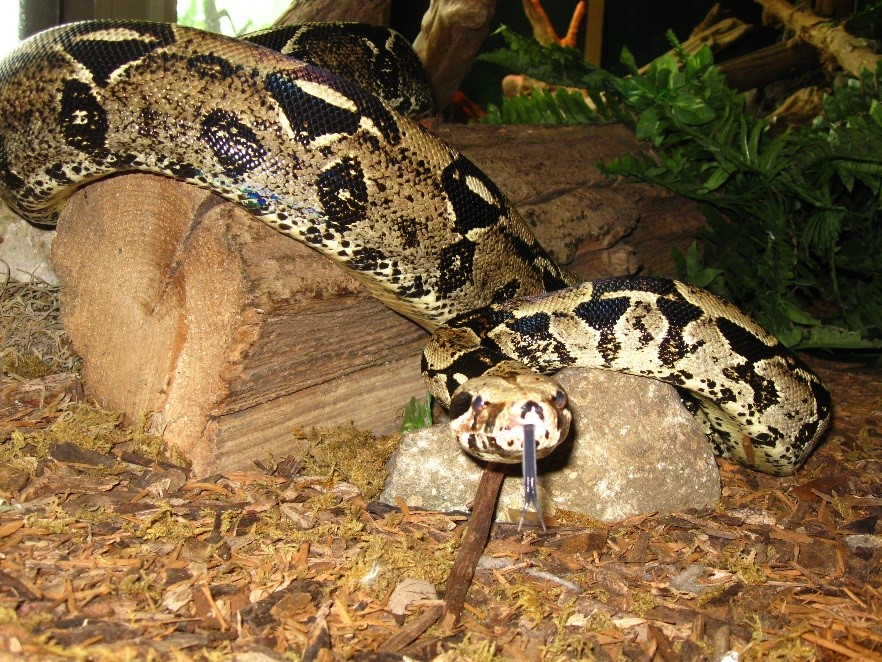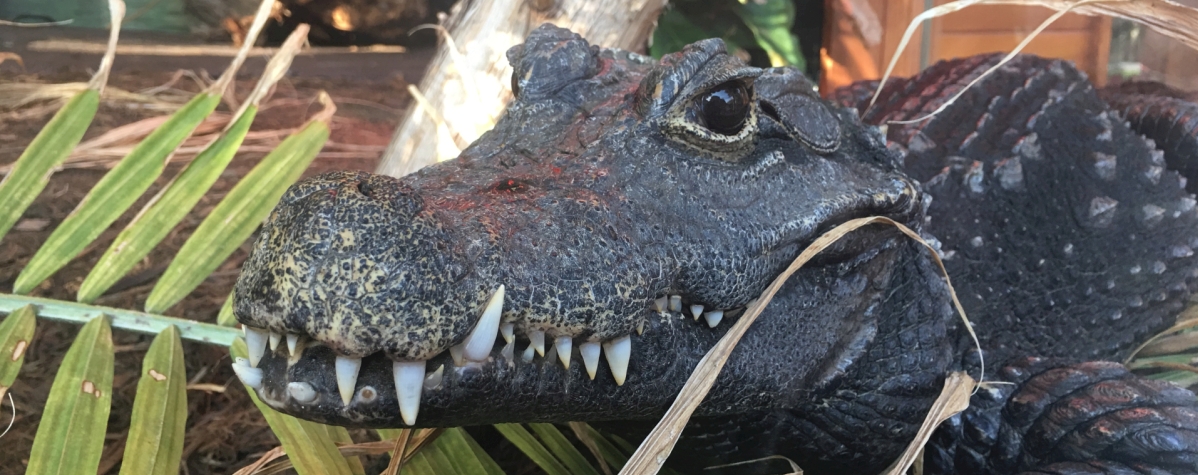Boa Constrictor
Scientific Classification 
| Species | Boa constrictor |
| Kingdom | Animalia |
| Phylum | Chordata |
| Class | Reptilia |
| Order | Squamata |
| Family | Boidae |
| IUCN Status | Least concern |
Appearance and lifespan
Boa constrictors are large snakes that can be between 1 to 4 m (3.5 to 13 ft.) in length and weigh approximately 35 to 45 kg (77 to 99lb). They have a narrow head with a pointed snout and can be coloured black, olive-green, brown or grey. Every snake has a distinct pattern of lines, spots, ovals and diamonds.
Boas can live up to 25 years in the wild and up to 30 years or more in captivity. The oldest common boa in captivity was recorded to have lived 40 years.
Behavior and reproduction
Boa constrictors are very peaceful and elusive and will avoid any contact with large animals. Boas are both terrestrial and arboreal, especially smaller individuals. They are solitary animals except during the breeding season, and mating occurs about once a year. The female releases a scent to attract a male. Boas are viviparous, meaning that the female does not lay eggs and the young are fully formed at birth.
After a gestation period of 4 to 8 months, 6 to 60 live young are born. Boa Constrictors become sexually mature at about 2 to 3 years of age.
Ecology and habitat
As their name suggests, Boa Constrictors constrict their prey. This involves the snake tightly coiling around the prey, not crushing it, but severely restricting movement. As the prey exhales, the tightening coils prevent the prey from inhaling. Very quickly the prey will asphyxiate (suffocate). To accomplish this, Boa Constrictors are extremely muscular and usually heavy bodied snakes. The Boa Constrictor will often prey on bats by hanging from trees or waiting at the mouths of caves. They will also hunt birds, mammals and other reptiles and generally hunt at night.
Food at the Zoo
At Riverview, the boa is fed large rats twice a month.
Threats
Boas are hunted for their skins as well as for sale in the exotic pet world. Their natural predators include caimans, jaguars and humans. Most boa species are not threatened or in danger of immediate extinction, however most have a protected status in their regions.
Did you know?
- The longest recorded Boa was measured at 5.4 m long.
- The Common Boa flicks its tongue to pick up scents.
- They can swim but would rather stay on dry land.


